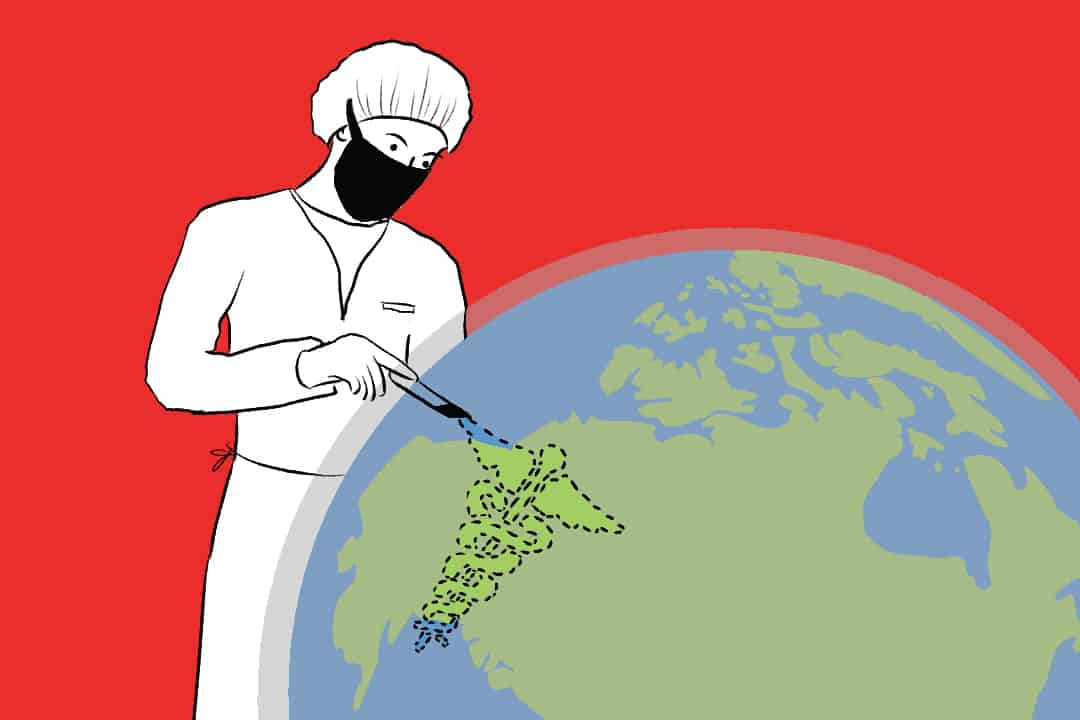The greatest threat to health across the globe is the climate crisis.
This is the position taken by the World Health Organization (WHO) and Canada is, of course, not spared of this fact. The effects of the crisis include damage to the physical and mental health of millions of Canadian patients. This can stem from the spread of Lyme disease, uptick in heat-related deaths after prolonged heat waves, extended pollen season triggering asthma complications, lung damage from wildfires, and psychological harm from flooding and increasing climate anxiety, among other things.
How the climate crisis disproportionately impacts patients in marginalized communities
The health impacts of the climate crisis are also disproportionately felt by marginalized communities.
The Varsity spoke to Dr. Samantha Green, a board member of the Canadian Association of Physicians for the Environment (CAPE), an assistant professor at the Dalla Lana School of Public Health, and a family physician who works with marginalized communities downtown.
People living in poverty, racialized individuals, and Indigenous peoples are most affected, noted Green. Their vulnerability is a product of historical social conditions, such as economic inequality, racism, colonialism, and systematic oppression.
She explained, “It’s all about whether you have access to resources to, for example, repair your home when it gets flooded or to access foods when there is increasing food insecurity.”
One example from her own practice is that “with heat waves, especially with people living in poverty, it can be hard to cope. You can’t afford an air conditioner… and if you’re socially isolated, or if there’s mobility issues and you can’t make it to an air conditioned environment, then it’s really hard.”
The impact of the climate crisis on the health care system
The climate crisis, however, not only impacts people, but also impacts health care institutions by damaging systems and limiting access to critical resources.
The Varsity spoke to George Kitching, a medical student at Western University, who explained it further.
“After the hurricane in Puerto Rico, there was a shortage in normal saline because that was the major production site… for Canada,” he said. Kitching explained that it’s difficult to ensure that the health care system is robust against impacts due to the climate crisis, both in Canada and around the world.
The intersection of the climate crisis and medical education
Despite the climate crisis being clearly relevant for medical education, “medical schools have not adequately addressed the urgent need for training,” according to a University of Toronto-affiliated article in The Lancet, co-authored by Kitching.
The Canadian Federation of Medical Students created a task force called HEART — standing for the Health and Environment Adaptive Response Task Force — in 2016 in order to help medical students to raise awareness around the issue of environmental impacts on health.
In response to the crisis, as reporting by Kitching and his co-authors, HEART has developed a set of core curricular competencies to be included in curriculum of medical schools across Canada to integrate planetary health education in the undergraduate medical programs.
The task force also conducted a national survey of medical schools, identifying strengths and areas for improvement for planetary health teaching in undergraduate medical programs. It’s the first evaluation of its kind in Canada, and a report of its findings and recommendations was recently published.
Kitching, who is also a member of HEART, explained that the task force “sent it out to deans at most schools. The ask was to meet with students at each school to chart a path forward to address some of the critiques and some of the suggestions that we had in the report… The next step for HEART as a task force is to support local students at each to use the report to push their faculty and deans to incorporate further training.”
However, one of the biggest pushbacks they face is that the medical curriculum is already packed, and to add one thing, another thing must be taken out in return, according to the co-authors.
To tackle this, the report recommends integrating planetary health teaching into existing lectures, for example, by including air pollution with respiratory health teaching. The report also recommends case studies to help focus on the disproportionate impact to marginalized communities.
Thinking about health care and the climate crisis
The health care industry both affects, and is affected by, the climate crisis.
A 2018 study concluded that the health care sector in Canada was responsible for 4.6 per cent of the nation’s carbon dioxide equivalents, which is a measure of environmental impact, and estimated that it resulted in 23,000 years of life lost due to illness, disability, or premature death.
The study advocated for health care professionals to adopt more sustainable practices. For example, the National Health Service Centre in the United Kingdom calculates carbon footprints of various health care activities like staff transport and waste disposal.
Health care professionals should also be trained to think more sustainably without compromising patient care, according to the report.
“We need to be learning not only about the efficacy of medications we prescribe [and] also their cost, [but] also their climate costs and environmental costs,” said Green.


